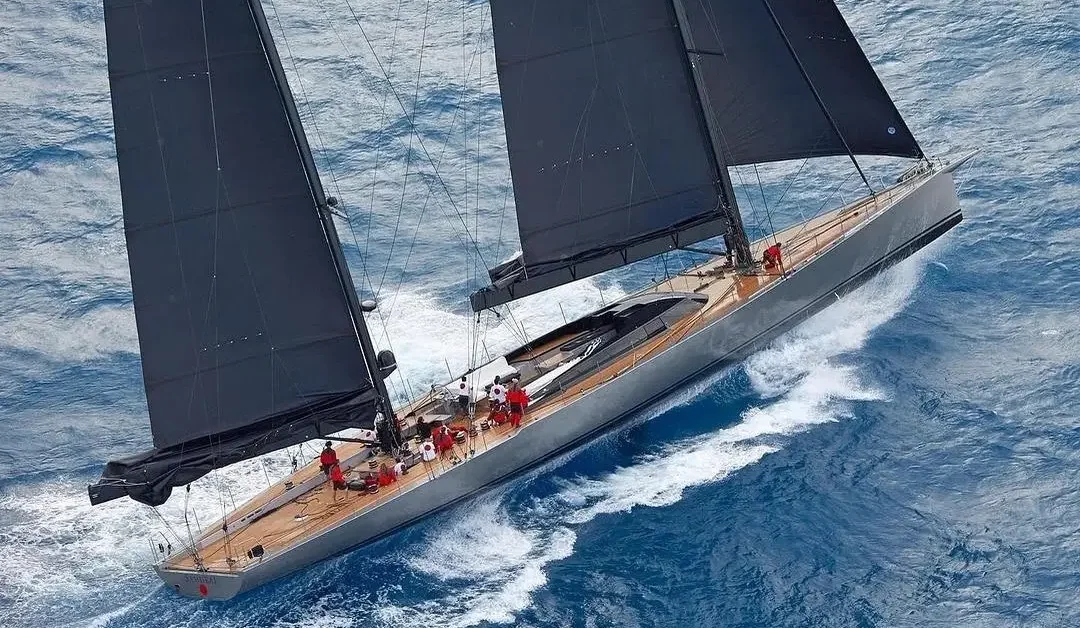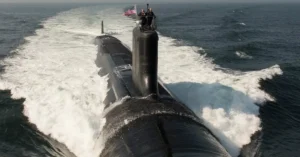Wondering how fast does a sailboat go? The speed of a sailboat depends on factors like wind conditions, boat size, and crew skill. On average, cruising sailboats travel between 4-6 knots (4.5-7 mph), with a top speed of 7 knots (8 mph). Racing sailboats average around 15 knots (17 mph) but can reach even higher velocities.
Our article will explore how wind, boat design, and crew ability impact sailboat speed. We’ll cover average and top speeds for different boat types, from small dinghies to large cruisers. Some of the fastest sailboats in the world will also be discussed. By the end, you’ll understand the speed capabilities of various sailboats under changing conditions.
Understanding Sailboat Speed
We have always been curious about sailboats and often find ourselves wondering how fast does a sailboat go. Sailboat speed is an essential aspect for many sailors and enthusiasts. In this section, we’ll discuss the factors influencing sailboat speed, average speeds, top speeds, and how to measure speed in different units like knots, nautical miles, mph, and km/h.
Sailboat speed can vary significantly, depending on several factors, such as the type and design of the sailboat, wind strength and direction, and the sailor’s skill. Knowing the average speed of a sailboat is helpful when planning trips or participating in races. Generally, the average speed of a cruising sailboat ranges from 4-6 knots (4.5-7 mph), while racing sailboats can achieve an average of 15 knots (17 mph), with top speeds reaching up to 20 knots (23 mph) in regatta competitions.
Understanding sailboat speed involves grasping a vital concept known as the maximum hull speed. This theoretical limit, determined by the boat’s hull design and length, dictates the maximum speed at which a sailboat can move through the water. A general guideline for calculating the maximum hull speed (in knots) is to multiply 1.34 by the square root of the waterline length (in feet).
1 knot = 1.15 mph = 1.85 km/hWhen measuring speed, remember that 1 knot equals one nautical mile per hour, approximately 1.15 miles per hour (mph) or 1.85 kilometers per hour (km/h) ^3^. To convert from knots to mph or km/h, you can multiply the speed in knots by 1.15 for mph or 1.85 for km/h.
Understanding sailboat speed is essential for both leisure sailors and racers. By knowing more about your sailboat’s potential speed considering factors like wind conditions and the boat’s design, you can make informed decisions on properly navigating your journey, race, or competition. Additionally, it’s crucial to consider how fast does a sailboat go to ensure a comprehensive understanding of its capabilities.
Factors Affecting Sailboat Speed

Ever wondered how fast a sailboat goes? Numerous factors, like wind, hull shape, and sail design, affect a sailboat’s speed. This section will discuss significant factors that influence a boat’s sailing pace.
Wind plays a crucial role in determining a sailboat’s speed—the wind speed and wind direction impact how the sails generate power. Stronger winds generally result in faster speeds, but the relation between wind and boat speed is not linear. Factors like the angle of the sails to the wind and the wind conditions also affect sail efficiency.
Moreover, a sailboat’s hull shape and weight distribution largely determine how it moves through the water. Different hull designs can either minimize drag or provide stability. Heavier boats generally plow through waves, causing more drag and slower speeds, while lighter boats can maneuver and slice through the water faster. However, heavier boats may perform better in rough sea conditions.
The size and design of the sails are essential for harnessing the wind’s power. Larger sail areas can capture more wind, propelling the boat faster. The type and shape of the sails also impact sailboat speed. For instance, more efficient sail designs can generate more power for the same sail area.
Sailboats have a keel that functions as a ballast to provide stability and counteract the wind forces pushing the boat sideways. Longer keels can reduce drag and provide consistent direction when sailing. Additionally, currents may work for or against the ship, pushing it off course or sometimes increasing the speed.
Ultimately, a sailboat’s speed is measured in nautical miles per hour, known as knots. Water conditions, such as waves, can also affect the speed. Flatter seas and calmer water conditions enable the boat to move more effortlessly.
To summarize, sailboat speed depends on factors like wind speed, wind direction, hull shape, weight distribution, sail area, keel design, and water conditions. Understanding and optimizing these factors can help sailors achieve better sailing speeds and overall sailing experience.
Types of Sailboats and Their Speeds

Have you ever wondered how fast a sailboat goes? Speed varies depending on the type of sailboat and other factors. In this section, let us dive into the different types of sailboats and their respective speeds.
Dinghies are small, agile sailboats that can reach 5 to 15 knots. They’re famous for learning to sail, racing, and having fun on the water. Dinghies typically have planing hulls, allowing them to glide over the water’s surface and reach higher speeds.
Cruising sailboats are designed for leisurely journeys, prioritizing comfort and stability. These boats have displacement hulls, which limit their maximum speed to a theoretical limit known as “hull speed.” On average, cruising sailboats travel at 5 to 8 knots.
Racing sailboats are built for speed and competitiveness. These boats often have performance-oriented hull designs and high-quality materials. Racing sailboats can reach 12 to 20 knots or more speeds, depending on the boat design and sailing conditions.
Monohulls, catamarans, and trimarans are shared among the various sailboats. Monohulls are single-hulled boats, while catamarans and trimarans are multihulls with two and three hulls, respectively. Catamarans and trimarans generally offer better stability and speed performance than monohulls. Rapido 60 (Trimaran) and ICE Cat 61 (Catamaran) are fast multihull sailboats.
While the boat design and hull type are significant factors in determining a sailboat’s speed, additional factors such as wind direction, sail configuration, and the sailor’s skill also play a role. GPS devices are sometimes used to monitor speed for precise measurements.
Finally, the record-breaking Vestas Sailrocket 2, a unique sailboat that defies conventional designs, is worth mentioning. This boat holds the world speed sailing record, clocking in at an astonishing 65 knots. Of course, this category-defining vessel is far from a typical sailboat. Nonetheless, it exemplifies what is possible with innovative engineering and a forward-looking approach to sailing.
In conclusion, sailboats have a wide range of speeds depending on their design, configuration, and purpose. Whether you’re sailing a small dinghy or a high-performance racing yacht, the joy of sailing lies in the union of wind, water, and human skill.
Measuring and Maintaining Sailboat Speed

How fast does a sailboat go? That’s a question that comes up often among sailing enthusiasts. This section will discuss various aspects related to measuring and maintaining sailboat speed.
Sailboat speeds rely on several factors, including the design, size, and materials used in the construction. Common materials for sailboats are carbon fiber or fiberglass. The height and length of the boat also play a significant role in determining its speed. Smaller sailboats like Lasers and Hobie Cats are agile and fast, while more extensive cruising or racing boats like J/boats have a more stable and controlled speed.
Factors affecting sailboat speeds include:
- Sail trim: Proper adjustment of sails is crucial for optimizing boat speed.
- Mast step position, shroud tension, and jib car position influence a sail’s shape and efficiency.
- Points of sail: The angle between the boat’s course and the wind direction impacts boat speed. Maximum speed is usually achieved on a broad reach.
- Hydrofoils: Some modern sailboats incorporate hydrofoils to lift the hull out of the water, reducing drag and increasing speed.
GPS is the most commonly used device to measure sailboat speed, providing accurate data on the boat’s speed over the ground. To cover the most significant distance per day, the ideal approach is to keep the boat’s speed synchronized with the wind and waves without pushing it to its limits. Additionally, understanding how fast does a sailboat go is key to optimizing its performance.
Downwind sailing is an adrenaline-filled experience, with higher speeds due to the wind pushing the boat from behind. Maintaining appropriate sail trim and balance is critical for safety and control. Sailors should also consider how fast does a sailboat go during downwind sailing for a comprehensive understanding of their vessel’s capabilities.
Proper maintenance of both the hull and the engine is essential for achieving and maintaining optimal sailboat speeds. Keeping the hull clean and smooth ensures efficient sailing while caring for the motor (on boats equipped with one), providing a practical propulsion system when needed. It’s essential to consider how fast does a sailboat go in various conditions to make informed decisions about maintenance and performance.
In competitions like regattas, sailboat speeds become even more crucial. Crews must manage various factors, such as adjusting sails, monitoring the autopilot, and closely watching GPS data. Understanding how fast does a sailboat go in a competitive setting is vital for strategic decision-making during races.
Here’s a summary of what we covered:
- Factors affecting sailboat speed include design, materials, sail trim, mast step position, shroud tension, and jib car position.
- GPS is commonly used for measuring sailboat speed.
- Proper maintenance of the hull and engine helps maintain optimal sailboat speeds.
If you want to explore the world of sailing further and improve your skills in optimizing sailboat speed, consider joining a local sailing club or taking a course. This will help you better understand how to handle these factors and maximize your sailboat’s performance.
Sailboat Design and Technologies

When understanding how fast does a sailboat goes, it’s essential to consider various factors such as boat design, sailing techniques, and technology. This section will discuss some of these elements and their impact on sailboat speed.
The hull design plays a crucial role in determining a sailboat’s speed. The shape of the hull has a significant effect on the boat’s friction and efficiency through water. There are multiple hull types, including displacement hulls that rely on buoyancy and planing hulls that lift out of the water at higher speeds, reducing drag.
The size of the boat also influences its speed. In general, larger ships tend to be faster as they have a longer waterline length, which allows them to achieve a higher theoretical maximum speed called hull speed. Smaller boats, like dinghies, are lighter and more maneuverable but typically have a lower cruising speed.
Sailboat propulsion relies on harnessing the power of the wind, and various sailing techniques can help maximize the boat’s speed. Using tools like the vang, which helps control the boom angle, and adjusting the sail trim, sailors can optimize their boat’s performance.
Modern advancements have also improved sailboat speed, including hydrofoils that lift the boat out of the water, reducing drag and allowing for more significant speed potential.
GPS tracking devices provide accurate speed measurements and other valuable sailing data, including wind speed and direction, to measure a sailboat’s speed. Sailors use this information to fine-tune their techniques and boat adjustments.
In summary, several factors influence sailboat speed, such as boat design, size, sailing techniques, and advanced technologies. By understanding and optimizing these elements, sailors can maximize their boat’s performance and achieve the desired cruising speed.
FAQ – How fast does a sailboat go?
Sailboat speed is often a popular topic when discussing these fascinating watercraft. Since many factors determine “how fast does a sailboat goes,” let’s address the specifics by looking into common questions about their speeds. Check Our List below and let us know if something missing.
What is the speed of a sailboat?
The speed of a sailboat can vary greatly depending on various factors, such as its design, wind conditions, and the sailor’s skill. On average, cruising sailboats have a speed of 4-6 knots (4.5-7 mph) with a top speed of around 7 knots (8 mph). In comparison, racing sailboats can reach much higher speeds, sometimes up to 20 knots, with custom designs even going up to 50 knots.
How fast can you go sailing?
in. Here are some general speed ranges based on boat type:
Cruising sailboats: 4-6 knots (4.5-7 mph)
Racing sailboats: up to 20 knots
Custom high-performance sailboats: up to 50 knots
These speeds can be affected by wind speed and direction, sail area and design, hull design and weight, trim, sail control, and water conditions.
Do sailboats go fast?
Compared to motor-powered boats, sailboats may appear slower. However, they can still achieve impressive speeds depending on the design and type. For instance, high-performance racing sailboats can reach up to 15-20 knots (17-23 mph), which is relatively fast in sailing.
How fast was the average sailing ship?
In ancient times, the average speed of a sailing ship was around 6 knots (6.9 mph) for a trireme, which could be increased with better weather conditions and skilled rowers. Roman merchantmen could achieve a speed of two or three times that of a modern cargo ship, crossing the oceans at 17.8 knots.
How fast does a sailboat goes – the ultimate measure of nautical prowess or a subject of intrigue? Share your perspective and experiences on this informative Topic in the comments below.









